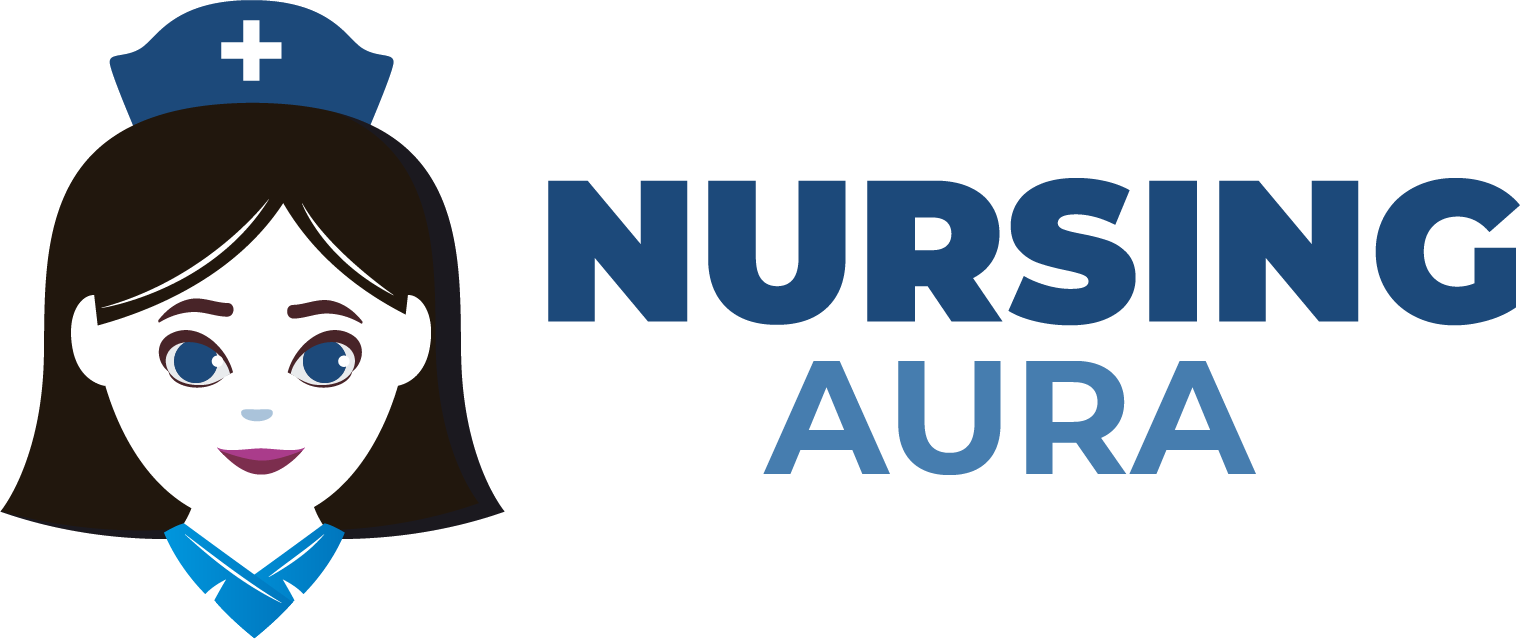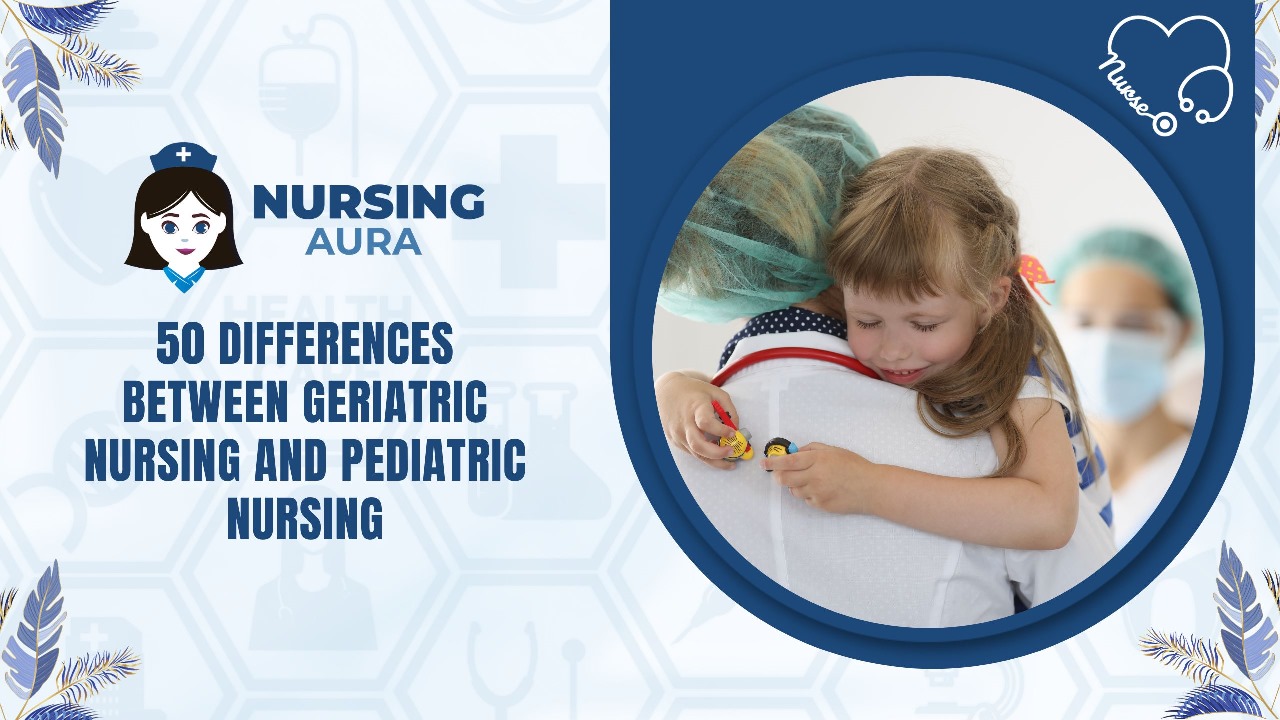Healthcare specialties geriatric and pediatric nursing serve specialized demographics with different requirements. They both care for vulnerable people, although patient age, medical problems, treatment techniques, and communication methods differ.
Elderly people 65 and older are the focus of geriatric nursing. Age-related chronic diseases, cognitive impairment, and mobility difficulties are common in this patient group. To treat aged patients, geriatric nurses must comprehend age-related changes in physiology, psychology, and social aspects. Multiple chronic illnesses, pain management, and quality of life in later life are common in their treatment.
Pediatric nursing treats babies, children, and adolescents from birth to 18. The developmental phases and requirements of young patients must be considered by pediatric nurses. They know how to assess age-appropriate growth and development milestones, give pediatric drugs, and assist the kid and family. In addition to addressing immunizations, development difficulties, and childhood diseases, pediatric nursing must include health promotion and preventative care.
Communication also distinguishes. Geriatric nurses treat patients with hearing impediments, cognitive decline, and linguistic challenges. Effective geriatric nursing communication requires patience and the capacity to adapt to senior patients’ demands. However, pediatric nursing requires good communication with the child and also with parents or guardians who influence care decisions. The treatment method also differs. Geriatric nursing deals with physical, psychological, and social elements of an aged patient’s life.
| S.No. | Aspects | Geriatric Nursing | Pediatric Nursing |
| 1 | Patient Age Group | Elderly population | Children |
| 2 | Physical Development | Degenerative changes | Growth and development |
| 3 | Cognitive Development | Decline in cognitive abilities | Cognitive growth and development |
| 4 | Communication Methods | Adjusting for hearing/vision loss | Adjusting for language development |
| 5 | Common Health Conditions | Osteoporosis, dementia | Respiratory infections, childhood illnesses |
| 6 | Treatment Approaches | Pain management, palliative care | Vaccinations, preventive care |
| 7 | Medication Administration | Polypharmacy, dosage adjustments | Liquid formulations, dosing based on weight |
| 8 | Psychological Support | Coping with loss, loneliness | Addressing fear, anxiety |
| 9 | Family Involvement | End-of-life discussions | Parental education, involvement in care |
| 10 | Social Activities | Community programs, group therapy | Play-based activities, school integration |
| 11 | Nutrition Recommendations | Dietary restrictions, hydration management | Growth-focused diets, breastfeeding support |
| 12 | Mobility Assistance | Fall prevention, assistive devices | Motor skill development, physical therapy |
| 13 | Safety Measures | Fall prevention, home safety | Childproofing, accident prevention |
| 14 | Emotional Support | Coping with aging process | Comfort during medical procedures |
| 15 | Developmental Milestones | Coping with loss of abilities | Achieving milestones, developmental assessments |
| 16 | Health Education | Managing chronic conditions | Parenting guidance, childcare education |
| 17 | Physiological Changes | Slower metabolism, hormonal changes | Rapid growth, hormonal changes |
| 18 | Cognitive Stimulation | Memory exercises, cognitive therapy | Educational play, cognitive development activities |
| 19 | Respiratory Support | Breathing exercises, oxygen therapy | Asthma management, respiratory therapy |
| 20 | Vaccination Schedules | Limited to specific vaccines | Comprehensive vaccination schedule |
| 21 | Health Monitoring | Vital signs, chronic condition management | Growth tracking, developmental assessments |
| 22 | Behavioral Management | Managing agitation, confusion | Addressing tantrums, behavioral issues |
| 23 | End-of-Life Care | Hospice care, advanced directives | Palliative care, family support |
| 24 | Immunocompromised Care | Preventing infections, wound care | Minimizing exposure, infection control |
| 25 | Environmental Modifications | Accessible housing, adaptive equipment | Childproofing, safe play environments |
| 26 | Sleep Patterns | Insomnia, sleep disorders | Sleep training, establishing routines |
| 27 | Mental Health Assessment | Depression, anxiety | Behavioral assessments, developmental delays |
| 28 | Sensory Support | Vision and hearing aids, sensory stimulation | Vision and hearing assessments, sensory integration therapy |
| 29 | Health Promotion | Active lifestyle encouragement | Health maintenance, hygiene education |
| 30 | Therapeutic Communication | Reminiscence therapy, empathy | Therapeutic play, communication through play |
| 31 | Patient Autonomy | Decision-making support | Encouraging independence, informed consent |
| 32 | Therapeutic Activities | Group discussions, music therapy | Art therapy, creative play |
| 33 | Educational Support | Disease management education | School reintegration support, educational resources |
| 34 | Care Planning | Long-term care planning, advanced directives | Growth and development plans, immunization schedules |
| 35 | Chronic Disease Management | Diabetes management, hypertension | Asthma management, childhood diseases |
| 36 | Pain Assessment and Management | Pain scales, non-pharmacological interventions | Pain scales, age-appropriate analgesics |
| 37 | Ethics in Care | End-of-life decisions, dignity | Informed consent, child protection |
| 38 | Preventive Measures | Fall prevention strategies, health screenings | Immunizations, well-child visits |
| 39 | Team Collaboration | Multidisciplinary teams, family involvement | Collaboration with parents, pediatric specialists |
| 40 | Rehabilitation Support | Physical therapy, occupational therapy | Speech therapy, developmental interventions |
| 41 | Support for Caregivers | Caregiver education, respite care | Parenting classes, support groups |
| 42 | Coping with Pain | Chronic pain management, alternative therapies | Pain management in procedures, distraction techniques |
| 43 | Cultural Sensitivity | Respect for cultural beliefs, customs | Cultural awareness in treatments, language considerations |
| 44 | Dementia Management | Memory aids, reality orientation | Cognitive stimulation, family education |
| 45 | Growth Monitoring | Decline monitoring, nutrition assessment | Growth tracking, developmental assessments |
| 46 | Palliative Care | Comfort measures, quality of life | Comfort during treatment, family support |
| 47 | Community Resources | Senior centers, support groups | Early intervention programs, parenting classes |
| 48 | Legal Considerations | Advanced directives, guardianship | Informed consent, child protection laws |
| 49 | Technology Integration | Remote monitoring devices, telehealth | Pediatric medical devices, educational apps |
| 50 | Resilience Building | Coping with aging challenges, social support | Coping with medical challenges, family resilience |
Frequently Asked Questions (FAQs)
Q1. What is geriatric nursing's key age group and what are its healthcare needs?
Seniors are the focus of geriatric nursing. Chronic diseases, cognitive decline, mobility, independence, and emotional support for aging are this population’s key healthcare issues.
Q2. What are the patient age and emphasis differences between pediatric and geriatric nursing?
Growing and developing newborns, children, and teenagers from birth to 18 are the focus of pediatric nursing. Geriatric nursing treats old people, usually 65 and older, and addresses age-related ailments and quality-of-life difficulties.
Q3. What function does communication play in geriatric and pediatric nursing?
In both fields, communication is essential. Communication styles are adjusted for hearing loss, cognitive decline, and language obstacles in geriatric nursing. Pediatric nurses must communicate with children and their parents or guardians to make care decisions.
Q4. What distinguishes geriatric and pediatric nursing treatment?
For the child’s well-being, pediatric nursing emphasizes family-centered care and includes parents and caregivers in decision-making and education. Geriatric nursing addresses physical, psychological, and social elements of an aged patient’s life to improve their quality of life.
Q5. How do pediatric nurses handle common health issues?
Pediatric nurses face vaccines, development difficulties, and infections. Children and their families get age-appropriate vaccines, growth and development milestones are monitored, and supportive care and information are provided to treat and prevent common pediatric health conditions.

